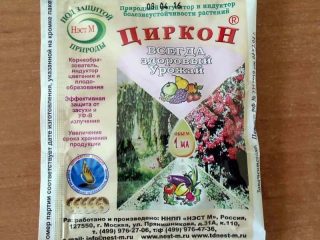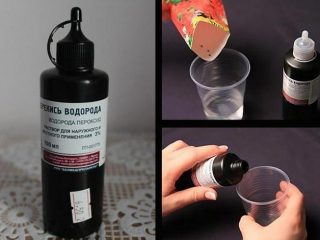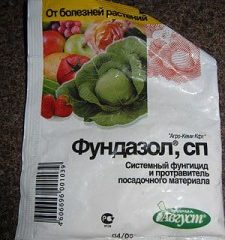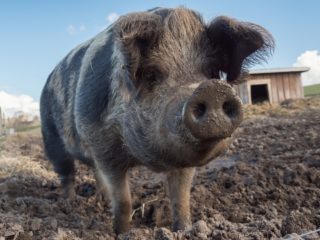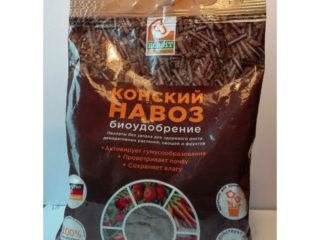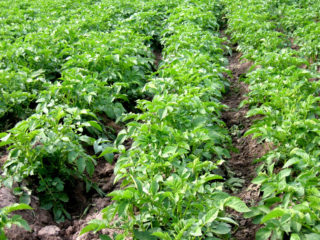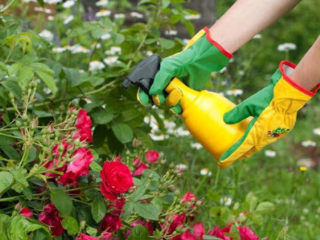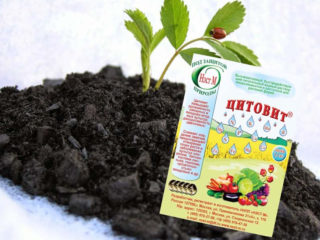Content
Fungicide Teldor is an effective systemic agent that protects fruit and berry and other crops from fungal infections (rot, scab and others). It is used at all stages of the growing season and has a prolonged effect. It is low toxic, so the treatment procedure can be carried out without special protective equipment.
Description of the drug
Teldor is a systemic fungicide that is used to protect various fruit and berry crops from fungal infections. It can be used at any stage of the growing season: from early germination in spring to harvesting in late autumn.
Compound
The active ingredient of Teldor is fenhexamide. 1 kg of fungicide contains 500 g of active ingredient.
Release forms
The fungicide is produced in the form of granules, highly soluble in water. Manufacturer: German company Bayer. The product is packaged in plastic bottles and bags of different weights.
Operating principle
Fenhexamide, getting on the surface of the plant, forms a dense film, thanks to which pests cannot enter the plant tissue. Moreover, this protection is not destroyed for several weeks, even in the rain. Also, the active substance inhibits the formation of styrene in fungal cells, due to which they begin to die en masse.
For what diseases is Teldor used?
The fungicide helps prevent the development of the following fungal diseases:
- gray rot;
- white rot;
- moliniasis;
- brown spot;
- powdery mildew;
- anthracnose;
- scab;
- sclerotinia.

Fungicide Teldor helps protect fruit and berry crops from most fungal diseases
What crops are they used for processing?
The instructions for use of the fungicide Teldor indicate that it is used on grapes and other crops. And not only fruit and berry, but also vegetable and decorative:
- strawberries;
- strawberry;
- currants of all types;
- cherry;
- cherries;
- peaches;
- tomatoes;
- eggplant;
- other plants.
Fungicide Teldor is a broad-spectrum agent. However, it best fights specific diseases, depending on the type of plant - for example, cabbage is treated against gray rot, and ornamental plants are treated against powdery mildew.
Culture | Diseases |
Strawberries, strawberries | Powdery mildew, anthracnose |
Peaches | Scab |
Cherry | Brown spot, powdery mildew, cherry coccomycosis |
Currants, ornamental plants | Powdery mildew |
Eggplants, tomatoes | Brown spot |
Cabbage | Gray rot |
Greenery | Wet rot |
Consumption rates
The consumption rate of Teldor fungicide is 8 g of the drug per standard bucket of water (10 l). This amount is enough to process 100 m2, i.e. 1 hundred.Other standards also apply - they depend on the specific type of plant.
Culture | Consumption rate, g per 10 l of water | Processing area, m² |
Peach | 8 | 100 |
Strawberries, strawberries | 16 | 100 |
Cherries | 10 | 100 |
Grape | 10 | 50 |
Instructions for use of the drug Teldor
The instructions are quite simple: dissolve the granules in water and mix thoroughly. After infusion, begin spraying.
Preparation of the solution
It is better to wear gloves before preparing the solution. Sequencing:
- Calculate the required dosage so that the entire volume is consumed at one time.
- Pour water into the bucket up to half the volume.
- Dissolve the required amount of granules.
- Add the remaining water and stir.
- Pour into a spray bottle and begin processing.
The instructions for using Teldor fungicide on strawberries and other crops are the same. Only the consumption rates and frequency of treatments differ.
When and how to spray correctly
Spray the green part of the plants in the evening. This is done in the absence of wind and rain. According to the forecast, there should be no precipitation in the next two days. The number of sprayings per season is up to 3-5 times. The waiting period (before harvesting the fruit) depends on the crop. The minimum interval between treatments is 10 days.
Culture | Number of treatments* | Waiting period, days |
Strawberries, strawberries | 3 | 10 |
Peach | 3 | 20 |
Grape | 4 | 15 |
*The table shows the maximum number of treatments per season. In the case of preventive treatment in the spring, repeated spraying can be carried out after a month, and then as needed.

The standard dosage of Teldor fungicide is 8 g per bucket of water (10 l)
Advantages and disadvantages
According to reviews from summer residents, Teldor fungicide must be used in accordance with the instructions for use.Thanks to this, it is possible to achieve maximum effect:
- The transportability and keeping quality of fruits increases significantly: they retain their marketability and taste for a long time;
- the risk of fungal infections is minimal: a film is formed on the surface of the plant tissue that protects grapes and other crops throughout the season;
- The drug is safe for both people and animals, as well as for beneficial insects. It can be used near apiaries and residential buildings;
- Teldor fungicide is economical: the consumption rate is small, which allows it to be used throughout the season;
- the product can be used together with various insecticides;
- there is no resistance: treatment with the drug can be carried out for several years in a row.
Among the disadvantages, it is noted that the fungicide should not be used in tank mixtures. Those. treatment is carried out only with Teldor, and then (if necessary) with other means.
Precautionary measures
The product belongs to toxicity class 3 (the drug is low-hazard). Therefore, during processing you do not need to use additional protective equipment (mask, respirator, goggles, special clothing). But it is undesirable to come into contact with the liquid, so it is better to wear gloves when mixing and spraying.
During processing, standard safety precautions are observed: do not eat, do not drink, and do not allow children into the area. If liquid gets into your eyes, rinse them immediately with medium pressure water.

If the fungicide was accidentally swallowed, the victim is given several tablets of activated carbon and plenty of fluids to drink.
Storage rules
The drug is stored at normal temperature and moderate humidity. Access by children and pets is prohibited. The expiration date is indicated on the packaging, it is 2 years.
Analogues
The drug Teldor has quite a few analogues, which are used for strawberries, fruit trees, vegetables and ornamental crops for the prevention and treatment of fungal pathologies:
- Baktofit – a broad-spectrum drug.
- Thiovit – protects against powdery mildew and spider mites.
- Tecto – has a wide spectrum of action.
- Cumulus – effective against powdery mildew.
- Trichodermin – protects plants from fungal and bacterial infections.
- Euparen – a fungicide used to kill fungal spores.
- Rovral used to protect vegetable crops and sunflowers.
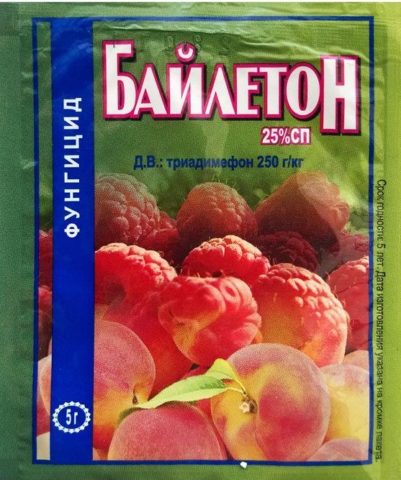
Bayleton can replace Teldor because it has a wide spectrum of action
Each of these fungicides has its own pros and cons. For example, the drug Teldor is mainly used for spraying peaches, grapes, strawberries, cherries and cherries. Other products (Bayelton, Tecto, Baktofit) have a wide spectrum of action.
Conclusion
Fungicide Teldor is a fairly effective drug used to protect fruit and berry crops (cherries, cherries, peaches, grapes, strawberries, strawberries). The product has a long protective period and is economical.Therefore, it is popular among farmers and summer residents.
